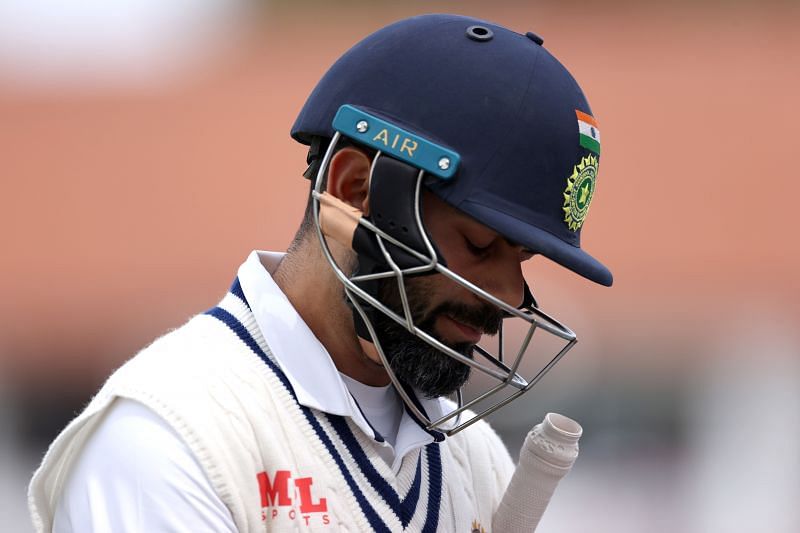
India's brittle middle order morphing into a huge concern
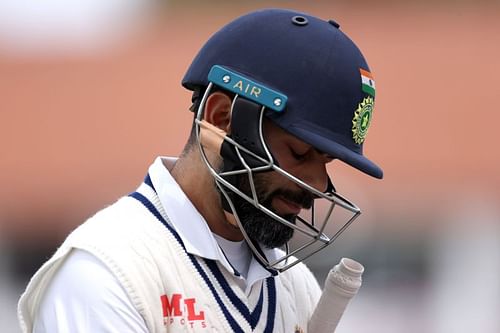
On 5th August 2021, when KL Rahul and Rohit Sharma strode out at Trent Bridge, India seemed the team in the ascendancy. Just a day earlier, the Men In Blue had skittled England out for 183, and on a surface that was easing up under the Nottingham sun, India were expected to drive home their advantage.
They began Day 2 strongly. A 97-run stand between Rahul and Rohit illustrated that they could snatch the game away from the hosts, despite having only played four sessions of Test cricket.
However, once the Mumbai Indians skipper departed on the stroke of Lunch, the tide swung dramatically. So much so that when rain interrupted proceedings on Day 2 just before Tea, England were arguably the side injected with momentum.
Though James Anderson and Ollie Robinson were majorly responsible for triggering that sway in fortunes, it also came about due to another Indian batting failure – a kind of collapse that has become too synonymous lately, especially in overseas conditions.
More worryingly, this time, there seemed to be an inevitability about the capitulation, suggesting that India, despite being labeled as one of the best batting units on the planet, might not be living up to that hype.
Over the years, Ajinkya Rahane, Cheteshwar Pujara and Virat Kohli have formed the crux of whatever India has achieved, both at home and away. While the fast-bowling battery has also contributed actively to India’s victories, the sheer weight of runs the troika has produced has allowed the Men In Blue to control matches.
Since the start of 2020, though, things have gone a touch pear-shaped - none of Kohli, Pujara or Rahane have been able to stamp their authority on matches. While the instant rebuttal would be that Pujara and Rahane conjured special knocks Down Under (in 2020-2021), the fact remains that the trio, especially in the 15 innings they have played together, have simply not been good enough.
During the aforementioned period, Kohli, Pujara and Rahane have middling averages anyway. The Indian captain averages 23 in 15 innings, while Pujara averages 25.28. Rahane, despite having fared slightly better than these two, still only averages 27 – a tally that isn’t befitting of a batter expected to hold the Indian unit together.
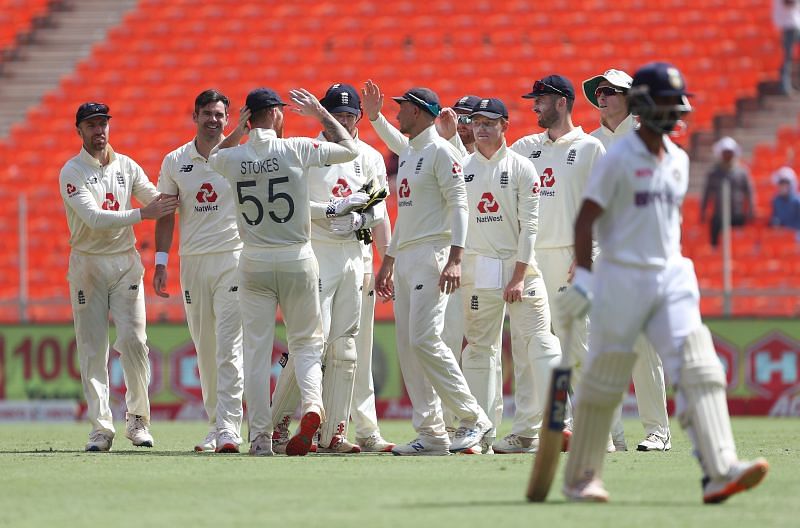
When playing in tandem, the numbers nosedive – something that is quite alarming, if one is an India fan. Kohli, having not played in the last three Tests Down Under, has the best average among the three (23 in 15 innings). Pujara and Rahane, on the other hand, only have corresponding tallies of 20.2 and 20.93 respectively.
Under ordinary circumstances, such a stat could be termed an aberration – one that might eventually give way to resumption of normal service. But there are quite a few elements that explain why this has happened in the first place. And if one were to be cruder, why it could have enormous implications moving forward.
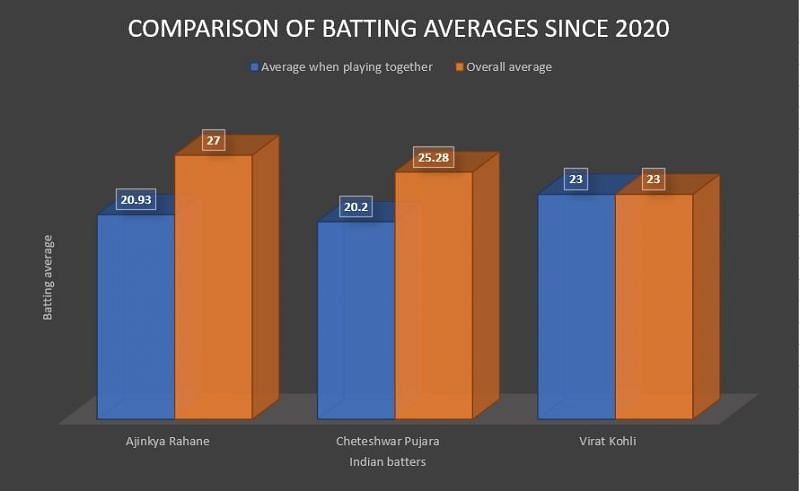
India's middle order has crumbled too often recently
For years, Pujara has been the sponge in India’s batting order – a player that soaks up pressure and then capitalizes when the bowlers get tired. While that is a perfectly operational working mechanism in good batting conditions, it comes unstuck when India play on bowler-friendly pitches, for a good delivery is always round the corner.
Inevitably, there has been a lot of chatter around his strike rate. Although Kohli has suggested that India’s No. 3 rarely lends an ear to it, one could sense that it was playing on Pujara’s mind when he walked out at Trent Bridge.
Usually, Pujara is an embodiment of calmness and he slips into his Zen avatar almost instantaneously. On Thursday, though, he looked anxious, fidgety and twitchy. He played at balls he would’ve ordinarily left alone and also hared down the track for risky singles.
In between, he also endured a massive brain-fade moment when he decided to shoulder arms to Robinson, despite the delivery angling into him. He was struck in front of middle and off stump, and while DRS saved Pujara on that occasion, that was hardly the kind of application one associates with India's No. 3.
Thus, an argument could be made that Pujara doesn’t feel comfortable deploying his style of batting with Kohli at the helm. Not just because the latter has openly professed his intention to play an attacking brand of cricket, but also because Pujara might not be bestowed with a lot of trust.
There have been a couple of previous instances when Kohli has omitted Pujara in favor of more dynamic batters. He did so in Sri Lanka in 2015 and during the away series against England in 2018. Both times, Pujara roared back into form with centuries but at the moment, those seem a deviation from a recurring theme.
Similarly, Rahane personified a cat on a hot tin roof at Trent Bridge on Thursday. Before he was ultimately run out by Jonny Bairstow, he had already endured a few close calls, including a streaky single to get off the mark.
And when he was dismissed, it smacked of a batter possessing a cluttered mindset and one not too confident in his own abilities. Instead, he wanted to keep doing something to show that he belonged in this team and in this environment. Lest one forget, Rahane is the vice-captain of India’s Test side, and the fact that he was so restless spoke volumes.
As for Kohli, well, it seems the India captain is just undergoing a slightly prolonged barren spell, which, considering his exploits previously, seems natural. However, in the process of wanting to dominate, especially with Pujara and Rahane not covering themselves in any glory, Kohli has had to shoulder humongous responsibility.
Moreover, India’s openers haven’t exactly set the world ablaze in foreign conditions and average just a tick over 20 (as a partnership) in the past couple of years. To an extent, then, it was a bonus that Rahul and Rohit batted for as long as they did and spared India’s blushes.
On most occasions, when the openers and the middle order have not been among the runs, India’s lower order has bailed out their more illustrious teammates regularly. In the process, the string of low scores that have piled up for Messrs. Kohli, Pujara and Rahane haven’t been highlighted as much.
It would be extremely naïve to expect that Ravichandran Ashwin, Ravindra Jadeja, Rishabh Pant or even Washington Sundar would always be around to save the day. In blunter terms, the lack of runs from India’s middle order severely decreases their chances of victory, especially against teams that keep turning the screw.
Additionally, the lack of faith in the batting unit is one of the primary reasons why Kohli has had to fall back on players such as Shardul Thakur and Sundar – cricketers whose primary suit is their bowling, but get into the team for the increased batting depth they bring to the fore.
While they have certainly done their individual cases no harm, it also comes at the cost of dropping Ashwin, who - bluntly put - is the best red-ball spinner in the sport. Hence, as things stand, it might seem that Kohli, Pujara and Rahane have arrived at a crossroads.
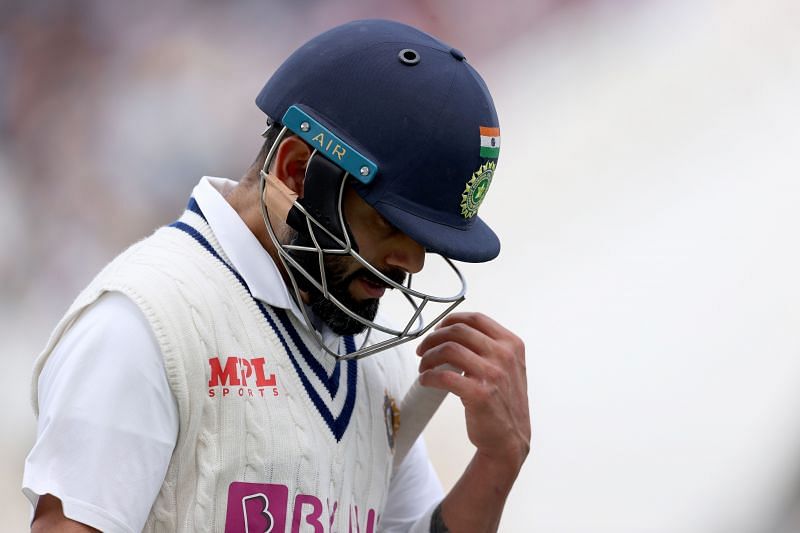
Kohli, for the sheer number of runs he has scored previously and the undeniable pedigree he has, plus the fact that he is the captain of India, is un-droppable. And, rightly so too.
As for Pujara and Rahane, they simply need to start pulling their weight a lot more. Not just because it would help India hold their own against quality opposition, but also because it would ease the pressure on those around them.
To that end, Pujara in particular might’ve even entered last-chance saloon, considering Kohli’s tendency to produce knee-jerk reactions after an India loss. Rahane, on the other hand, might have a bit more time, considering he is India’s red-ball vice-captain.
India can’t hope to trump the likes of Australia, England, New Zealand and South Africa (overseas) with such rudderless batting performances. Unfortunately, that rut seems to stem from Kohli, Pujara and Rahane.
For years, India has prided itself on its middle-order batting prowess. It has, unquestionably, been the Men In Blue’s greatest asset, even during Kohli’s tenure as India skipper. Now, though, there is a serious risk of it turning into their biggest liability.
Rather unwittingly, India’s brittle middle order has become a huge concern. And unless things improve drastically, it could be the facet that holds India back in their “final frontier”.
Also Read: KL Rahul's life comes full circle in England